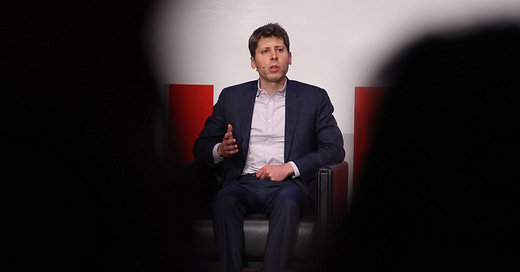Foundation Models Soar Even as the Economy Unravels
We’ve got revenue figures for Anthropic & Perplexity. Plus, the latest in the foundation model wars.
Hey everybody, it’s Tom Dotan.
You may recognize me from my appearances on the Newcomer podcast, and its previous iteration Dead Cat. I’m going to be freelancing for Newcomer, giving inside looks at the worlds of AI, VC, and how big technology companies shape the startup industry.
I spent the past couple years working for the Wall Street Journal, where I wrote about Microsoft, OpenAI, Salesforce, enterprise software, and cloud infrastructure.
Please drop me your thoughts, tips, and intel at tom@newcomer.co.
Without further ado, my first piece for Newcomer — chock full of financial scoops, sourcing tidbits, and analysis on the foundation model street fight.
Foundation Models’ Strong Q1 Revenue Performance
All the market chaos of last week, and the worries about whether tariffs will push the economy into recession, distracted from a remarkably positive indicator for the AI industry: the first quarter of the year was a pretty good one for foundation model companies.
Anthropic and OpenAI both ended up with revenue backing up the notion that the sector is hot. At the end of 2024 we were debating whether large language models had hit a wall, but the first quarter showed no signs of that as revenue growth powered along while models continued to show meaningful improvements.
OpenAI today released its o3 and o4-mini models that can edit images based on prompts and do even more sophisticated reasoning. They are topping the LLM leaderboards already. Today, Tyler Cowen called the new o3 model “AGI, seriously.” Now, OpenAI is reportedly in talks to buy code generation startup Windsurf (formerly known as Codeium) for $3 billion.
So far this year, Google may have finally shaken off its laggard status, releasing what is independently seen as among the most powerful, state-of-the-art models of the moment. The black sheep was Meta’s Llama, which had already been outshined by the rise of DeepSeek and now is facing big questions about its ability to keep up.
Among consumers, ChatGPT and xAI’s Grok reigned supreme.
A special mention should also go to Perplexity, which isn’t a foundation model company itself but has ridden the same AI momentum among consumers. Its CEO announced it crossed $100 million in annualized revenue in March; it’s since updated its projections and is tracking to reach around $200 million in annualized revenue by the end of the year, I’m told.
Google, for its part, is exploiting the direct relationship with consumers it has already. And Anthropic is building a powerful enterprise business, powering many of the buzziest AI applications.
Big businesses continued to up their spending on AI, according to a report from Morgan Stanley. In a survey of CIOs, the report showed that spending on AI and machine learning projects was up 17% in the first quarter compared to the same period last year. That was a one point increase from the fourth quarter of 2024.
Of course, a world where a productless, revenueless company can reportedly be valued at $32 billion, still feels a long way from rational. Almost all AI companies are burning cash. (One exception being AI voice startup ElevenLabs, which I hear is profitable.)
But the strength in the beginning of the year upended some prior assumptions about how the AI arms race would play out.
“We were so obsessed with competition,” one investor told me. “But it turned out that the overall market was bigger than we thought.”
Here’s a rundown on what’s happening with the most powerful foundation model providers
Anthropic
While ChatGPT has become the Kleenex of AI chatbots, Anthropic has won the hearts of businesses.
The company did around $950 million in revenue last year, according to two people familiar with the figures. Even more interesting is the fact that two-thirds of that revenue came from calls to its API, these people told me.
That growth continued into the first quarter, with the company now doing $2 billion in annualized revenue, and by the end of the year it could be as much as $4 billion as growth accelerates. Anthropic’s Claude model has emerged as a favorite among developers for its generative coding capabilities. That has helped it win early traction with enterprises as well as among AI-coding startups like Cursor and Windsurf.
Getting adoption from coding tool developers is good news—especially when it’s white-hot ones like Cursor. But it’s worth being at least somewhat wary of revenue coming in from profitless startups. Funneling venture capital from one startup and converting it to revenue in another is practically a tradition in the Valley, but has blown up from time to time. And if OpenAI acquires Windsurf, it seems very likely OpenAI would make the tool use its foundation models exclusively, cutting off an Anthropic revenue stream.
OpenAI
Demand for ChatGPT continues to skyrocket. Sam Altman said at a TED talk that the app had doubled its users in the past few weeks, which people then estimated put it at 800 million weekly active users (the last time OpenAI announced ChatGPT users they pegged it at 400 million). Part of that spike could have come from interest in its viral image generating feature, which continues to bounce around social media and brought in a million new users in an hour, according to Altman. It will be interesting to see how many stick around.






